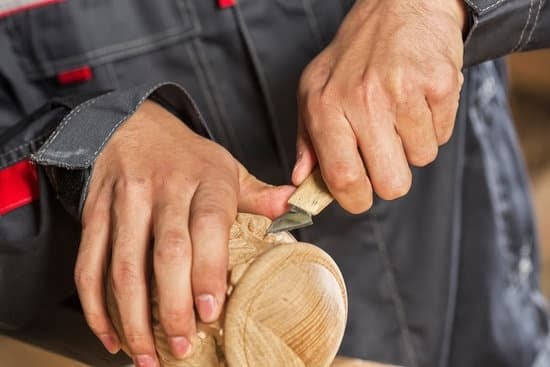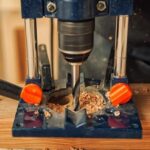Introduction
Hot melt adhesives for woodworking have been a staple of the industry for many years. It is thanks to their versatility and cost-effectiveness that these adhesives are used so often in woodworking applications. Hot melt adhesive technology has evolved significantly over the course of the century, from basic waxes and resins used in the early 20th century to sophisticated blends of ethylene vinyl acetate (EVA) and block copolymers petrochemicals that are now commonplace within woodworking glue production. Today’s hot-melted glues provide good strength for a variety of applications, including furniture assembly, veneer lamination and other structural applications which require reliable bonds formed with less time and effort. In addition, they resist heat and moisture much better than traditional varieties, providing superior performance throughout a project’s lifecycle.
What are Hot Melt Adhesives and How Do They Work?
Hot Melt Adhesives, also known as hot glue, are an adhesive compound used in woodworking to bond materials together. Hot Melt Adhesives are strong and flexible with a fast setting time. They come ready to use in solid sticks that can be applied to the wood by heating in a specialized glue gun. The heat from the gun liquefies the adhesive, allowing it to spread quickly and evenly onto the surface of the wood. When it cools down, it quickly bonds and dries, forming a secure seal that is both durable and easy to sand or paint over. Hot melt adhesives have excellent holding power on a variety of different surfaces like unfinished wood, finished wood, MDF (Medium Density Fiberboard), laminate, plastic, metal and more. This makes them an ideal choice for any kind of woodworking project where you need fast drying strength that doesn’t require clamps or wait times between applications.
Advantages of Hot Melt Adhesives in Woodworking
Hot melt adhesives are widely used in woodworking due to their fast application and drying times, allowing craftsmen to quickly put together furniture and cabinets. The use of hot melt adhesives can be appreciated in several ways. Firstly, they offer superior bonding strength, providing a reliable and long-lasting attachment between materials. Due to their better viscosity, they are able to penetrate into the substrates more easily leading to improved contact surface area and strong adhesive bonds. Additionally, being thermoplastic based materials, hot melts provide good flexibility when it is subjected to temperature changes. This is beneficial for woodworking as subfloors may expand or shrink over time which can lead to furniture disassembling prematurely due to poor adhesive bonding. Hot melt adhesives also have low water absorption rates which makes them ideal for wood-based products where water damage can be devastating. Lastly, hot melt adhesives usually contain fewer solvents and chemicals making them safer for the environment than conventional solvent based glues.
Choosing the Right Hot Melt Adhesive for Your Project
When it comes to woodworking, using the right hot melt adhesive (HMA) is an important step in achieving success. Hot melt adhesives are available in a variety of forms, from sprayable to paste-like, so you must be sure you know what type of adhesive your project requires in order to ensure the best results. Doing research on different types and brands of HMA can help you select something that works well for the task at hand. Various factors such as temperature, curing time, and heat resistance should all be taken into consideration when selecting an appropriate hot melt adhesive.
When applying the adhesive, always read the instructions that come with it carefully. Many HMAs require specific temperatures and settings when used in order to achieve optimal results–these instructions should be followed precisely to make sure that your project turns out just as you want it. It’s also essential to give yourself plenty of time since some products need ample time to cure before they reach their full bond strength. If necessary, use a heat gun or other tools to give the desired shape once your hot melt adhesive has dried completely. Additionally, keep safety precautions in mind when working with HMA–as most products contain volatile organic compounds (VOCs) that can be hazardous when inhaled. Taking necessary precautions will ensure that your woodworking endeavors stay safe and successful!
Preparing the Wood for Hot Melt Adhesive Application
Before applying hot melt adhesive for woodworking, it is important to prepare the wood. This involves preparing any joints between the pieces of wood being bonded together, ensuring that both surfaces have a smooth finish, removing any dirt or dust from surfaces, and making sure both pieces are free from moisture and oils. If there are severe nail holes or gaps in the joint, it is recommended that these areas are filled with putty or caulk prior to applying the hot melt adhesive. For best results, use a chemical degreaser before gluing two pieces of wood together to ensure that no grease has built up on either surface. Additionally, roughing up the surface of each piece before gluing can help create more surface area and stronger bond between pieces.
Using Hot Melt Adhesives Safely and Effectively
Hot melt adhesives are an increasingly popular option for projects in woodworking, offering many advantages over traditional glue and other adhesive variants. When used correctly, hot melt adhesives create a strong bond that stands up to heat, water, and time. In this article, we will discuss the proper techniques for using hot melt adhesives in woodworking.
First of all, it’s essential that you read and follow all safety instructions when using hot melt adhesives; work with them in a well-ventilated area and wear protective goggles and gloves to avoid skin contact with the heated material.
When applying a hot melt adhesive, you must use the correct temperature setting. As a rule of thumb, the higher the temperature of your iron or gun—which applies even heat to the glue—the better chance at achieving maximum bond strength. With some materials such as softwoods or thin veneers, however, lower temperatures may be preferable to avoid damaging or burning them. Be sure to check your product’s user manual for information on appropriate settings for various materials.
Moreover it is important to consider the spread pattern of your adhesive when choosing which tool to use; for small areas it’s best to apply the glue with an iron so that even coverage is achieved. For large projects such as cabinets or furniture making, adhesive guns can provide easy application but often require manual control during application because of their tendency to produce inconsistent patterns of glue coverage over time due to clogging issues.
Finally make sure that both surfaces you are joining have been prepped appropriately before applying hot melt adhesive – remove any dirt or paint residue and sand down any rough edges so that there is an optimal surface texture for bonding. There are also specialized tapes available nowadays which allow greater maneuverability while providing added protection against spills while gluing complex shapes together – they should be considered when producing intricate 3D designs using multiple pieces of wood as part of your project plan.
Troubleshooting Common Hot Melt Adhesive Mistakes
If you’re using hot melt adhesive for your woodworking, one of the biggest challenges is getting the best results without mistakes. When hot melt glue guns are used, they can produce high-strength bonds quickly and efficiently. However, adhesives that are either too weak or too strong can lead to poor results in your projects. Here are a few troubleshooting tips to help you avoid common adhesive mistakes:
1. Make sure you choose the right type of glue for your material: Different types of adhesives work better with different materials. For instance, low-melt glues work best with plastic, while polyamide adhesives are ideal for woodworking applications. Furthermore, some materials such as polyethylene require special hot melt grades to provide strong and reliable bonds.
2. Ensure that the surface is properly prepared: Good bonding strength begins with a clean and dry surface free from dust and grease. Always use an appropriate solvent for the job when preparing surfaces for hot melt application.
3. Select the right temperature setting: Hot melt glues typically require temperatures ranging between 150°C and 200°C (302°F – 392°F). Excessive temperatures may cause damage to delicate materials like paper or cloth while insufficient heat may not be enough to form strong bonds on plastic parts or plywood edges.
4. Apply pressure after dispensing the glue: It’s important to apply both pressure and heat at two separate stages during bonding processes; once before applying glue as well as after dispensing it for optimum results in a short span of time.
5 Use clamps where available: Thin objects such as cross-grain laminates can benefit from using clamping devices instead of relying solely on adhesive strength alone. Clamps help achieve good alignment which in turn improves overall strength – especially if correctly tightened according to specified force values (distributed across several points).
FAQs on Hot Melt Adhesives for Woodworking
Q: What is hot melt adhesive for woodworking?
A: Hot melt adhesives for woodworking are synthetic materials that are applied in a molten form, when cooled, the glue sets to firmly bond various pieces of material together. These adhesives are used to effectively attach components in furniture assembly and other types of joinery.
Q: Are hot melt adhesives safe?
A: Yes, hot melt adhesives are safe to use on most substrates, including woods, laminates and foams. They can be applied with a handheld or automated applicator and does not require open flames or compressed air used by some other glues. Most importantly, they are non-toxic and create strong bonds between surfaces.
Q : How long do hot melt adhesives take to cure/set?
A: Hot melt adhesives will generally set within 30 seconds after application, depending on ambient temperature and humidity levels. It is important to understand these variables as they can affect the cure rate of the adhesive. Once the adhesive has been cured it will remain fixed until it is exposed extreme temperatures or solvents.
Conclusion
Hot melt adhesives are a strong, reliable and efficient type of adhesive for use in woodworking. Hot melt adhesives can bond various materials together with a strong bond that is difficult to break. They provide an even application, as well as great stability over time. Using hot melt adhesives could save time and money in the long run since there is no need for additional fasteners or nails. The heat-activated properties also make it easier to keep bonds secure while allowing them to remain flexible. Furthermore, because of their resistance to pressure and temperature change, products made from glued wood will be safe and reliable even over a long period of time. For these reasons, hot melt adhesives are one of the best options for use in woodworking projects.

Hi everyone! I’m a woodworker and blogger, and this is my woodworking blog. In my blog, I share tips and tricks for woodworkers of all skill levels, as well as project ideas that you can try yourself.



